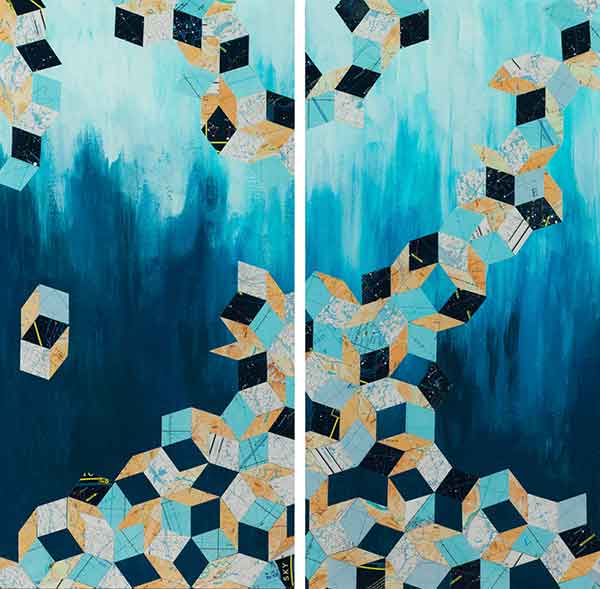Artist Tristesse Seeliger creates engaging mixed media works that bring together art and mathematics.
But in a way, her art mirrors her life: Both are a rich collage of inspiration and connections that, when viewed together, create something beautifully compelling.
“Art is the way that I’ve lived my life,” says the visual artist. “Art has always fed me in a way that nothing else has. Art has always been the thing that adequately describes how complicated the world is.”
The Vancouver artist grew up in an artistic family that celebrated “art in all its forms,” she says. As a child Tristesse danced and painted, encouraged by parents who were teachers, and then went on to study at Emily Carr University of Art + Design where she met fellow artist, and future husband, David Crompton.
A love of discovering the world through art pervades both her pieces and her personality. But – rather unusually – the artist is as comfortable talking about Penrose tiling as colour palettes.
“All of my work that I’ve done so far relates to math in that it is geometry and shapes that tessellate together.” she says. Her Splash 2016 donation, Territory 40, features Penrose tiling – named for mathematician and physicist Roger Penrose who created the pattern in the 1970s. The piece’s abstract form is created through a tessellation of tiles, some of which are cut from maps dating back to the 1960s. Through this, the artist takes landscapes and reassembles them to “recreate new territories”.
The piece’s mathematical precision demands a closer look from the viewer – but surprisingly, Tristesse says she didn’t like math as a kid.
“I didn’t have a good math teacher,” she says. But having “a really close friend who is a mathematician” opened up new creative direction. The artist has gone on to discover how “art, math, and science are intertwined, in that at the highest level they call upon the same human traits of curiosity, problem solving, and creativity.”
Tristesse exudes a curiosity about the world and, in her current work, she uses the language of math to have that discussion.
“There’s something essential about geometry,” she says. “I think that’s why people respond to it – it’s a system that we use to figure out the world.”

Territory 40, 2016